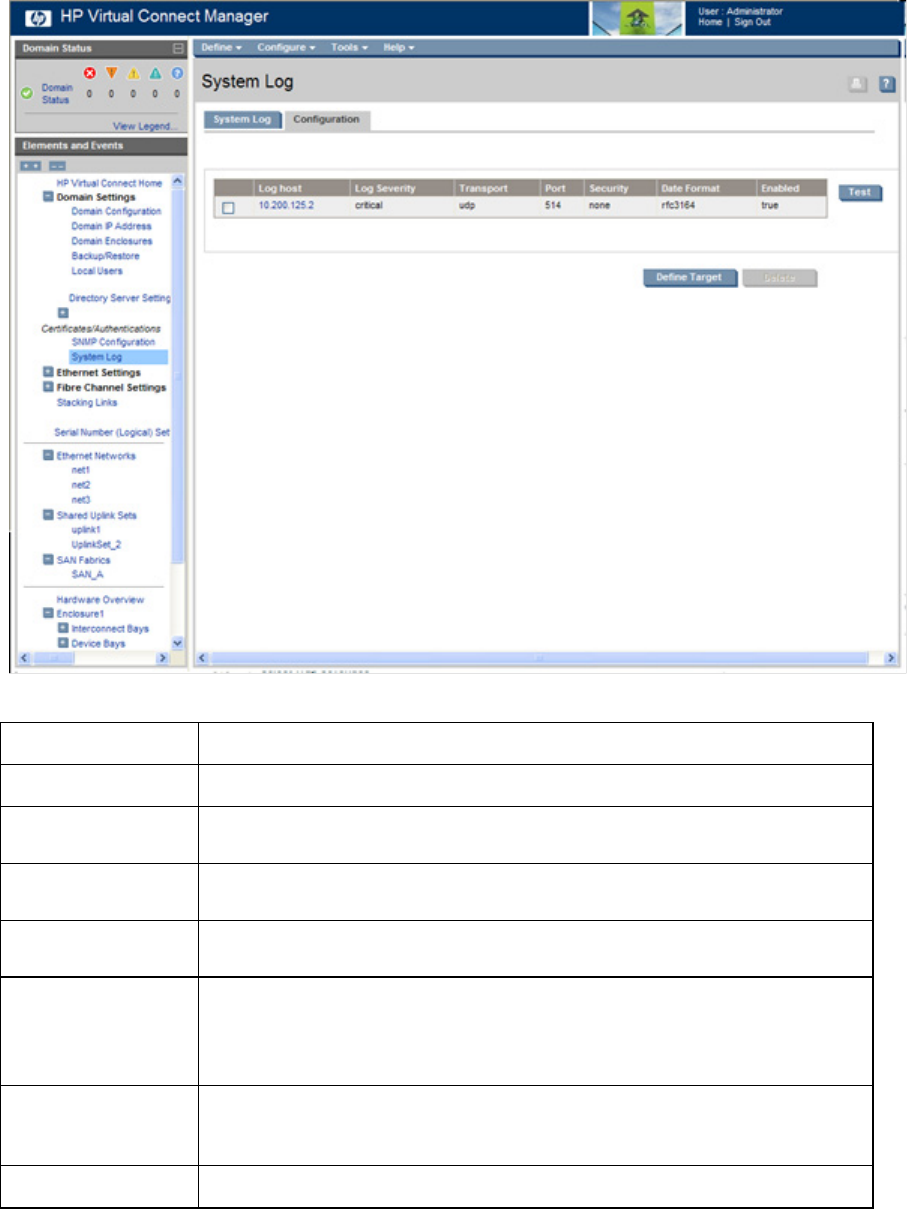Manual
Table Of Contents
- HP Virtual Connect for c-Class BladeSystemVersion 3.01User Guide
- Notice
- Contents
- Introduction
- Overview
- HP Virtual Connect Manager
- Domain management
- Domain overview
- Firmware updates
- Domain Settings (Domain Configuration) screen
- Domain Settings (Domain IP Address) screen
- Domain Settings (Domain Enclosures) screen
- Domain Settings (Backup/Restore) screen
- Domain Settings (Local Users) screen
- Directory Settings (Directory Server) screen
- Directory Settings (Directory Groups) screen
- Directory Settings (Directory Certificate) screen
- Test LDAP authentication
- SNMP overview
- System Log screen
- System Log Configuration
- Network management
- Networks overview
- Define Ethernet Network screen
- Edit Ethernet Network screen
- Ethernet Networks (External Connections) screen
- Ethernet Networks (Server Connections) screen
- Ethernet Settings (MAC Addresses) screen
- Ethernet Settings (Port Monitoring) screen
- Ethernet Settings (Advanced Settings) screen
- Stacking Links screen
- Shared uplink sets and VLAN tagging
- Define Shared Uplink Set screen
- Shared Uplink Sets (External Connections) screen
- Shared Uplink Sets (Associated Networks) screen
- Storage management
- Server management
- Certificate Administration
- Hardware information screens
- Enclosure Information screen
- Enclosure Status screen
- Interconnect Bays Status and Summary screen
- Causes for INCOMPATIBLE status
- Interconnect Bay Summary screen (Ethernet module)
- Interconnect Bay Summary screen (VC-FC Module)
- Module removal and replacement
- Interconnect Bay Overall Status icon definitions
- Interconnect Bay OA Reported Status icon definitions
- Interconnect Bay VC Status icon definitions
- Interconnect Bay OA Communication Status icon definitions
- Server Bays Summary screen
- Server Bay Status screen
- Acronyms and abbreviations
- Glossary
- Index

Domain management 51
System Log Configuration
Use this screen to view or set remote log destination settings.
Column Description
Log host The IP address or the DNS of the configured remote log destination
Log severity
Severity of the log messages that should be sent to the specified destination. Valid
values include "Critical", "Error", "Warning", and "Informational".
Transport
The transport protocol to be used for sending the log messages to the destination.
Valid values include "TCP" and "UDP".
Port
The port to be used on the destination to send the log messages. Valid values
include 1 to 65536. The default value is 514.
Security
Secure transmission of the log messages. Valid values include "None" and
"STunnel". The default value is "None", and no encryption is used during
transmission.
The "STunnel" option can be used only if the transport protocol used is TCP.
Date Format
The timestamp format for the log messages. Valid values include "RFC3164" (Nov
26 13:15:55) and "ISO8601" (1997-07-16T19:20:30+01:00). The default value
is "RFC3164".
Enabled Enables or disables the remote log destination
To define a new remote log destination, click Define Target.










